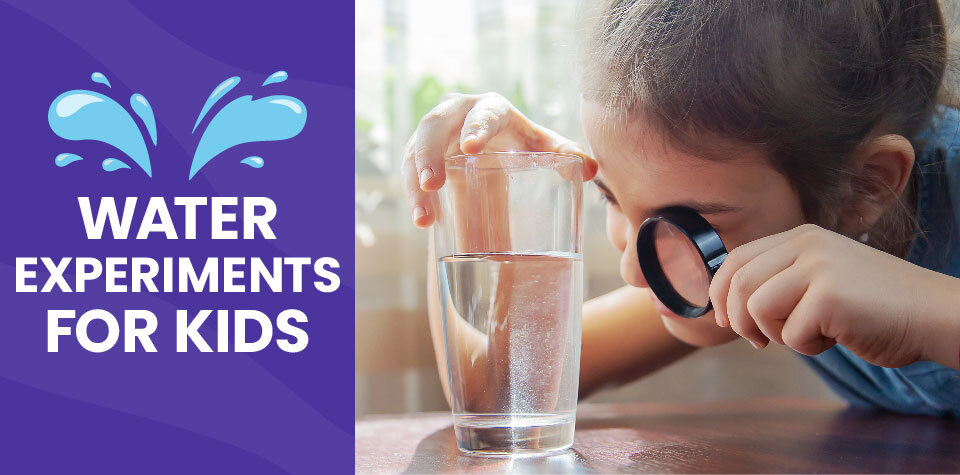
Dip Your Toes into Science with These Fun Water Experiments
Water is essential to life. We use it to cook, clean, stay hydrated, and much more. But even though we use water every day, we don’t always notice how special this liquid is.
Teaching your children about the uniqueness of water is a wonderful way to get them interested in science.
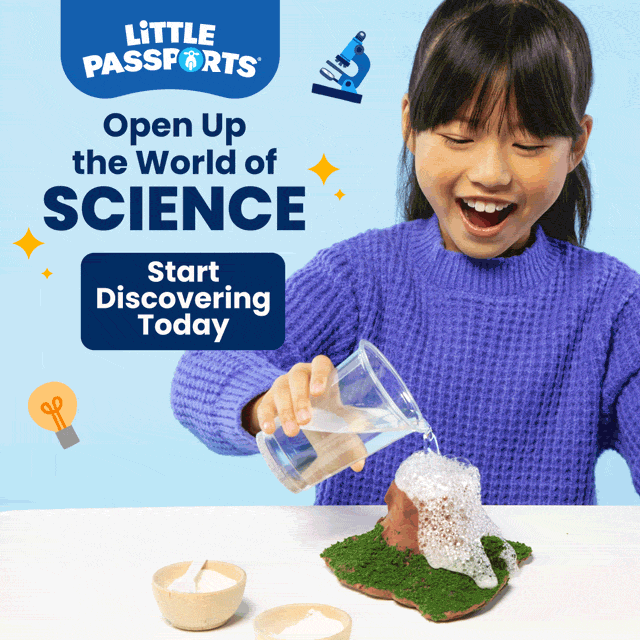
Water has a number of unique properties:
- It’s polar: Water molecules have a bent, V-shaped molecular structure, with two positively charged hydrogen atoms in one direction and a negatively charged oxygen atom in the other. This polarity allows water molecules to attract one another—the negative end of one molecule attracts the positive end of another and vice versa.
- It’s a great solvent: Water is sometimes called “the universal solvent” because it’s capable of dissolving more substances than any other liquid. Water’s solvency is essential to acid-base chemistry, allowing water to deliver dissolved nutrients to all living things. However, water can’t dissolve everything. Its polarity allows it to easily dissolve other polar molecules, such as sugar or salt, but not many nonpolar molecules like oil—that’s why oil and water don’t mix.
- It has a high heat capacity: Water requires a lot of energy to increase its temperature by even a degree. Because it absorbs a lot of heat before it begins to get hot, water plays a big role in regulating Earth’s climate.
- It’s less dense in its solid form: When water becomes a solid (ice), its molecules form a fixed crystalline structure. This structure spaces the molecules farther apart than they are in their liquid state, meaning ice is less dense than water. That’s why ice floats!
You and your children can observe water’s properties in action right in your home. Many science projects with water are simple yet informative, allowing you to see the fascinating ways water behaves without breaking out a chemistry set.
Here are a few of our favorite water experiments for kids:
Water Experiments for Young Scientists
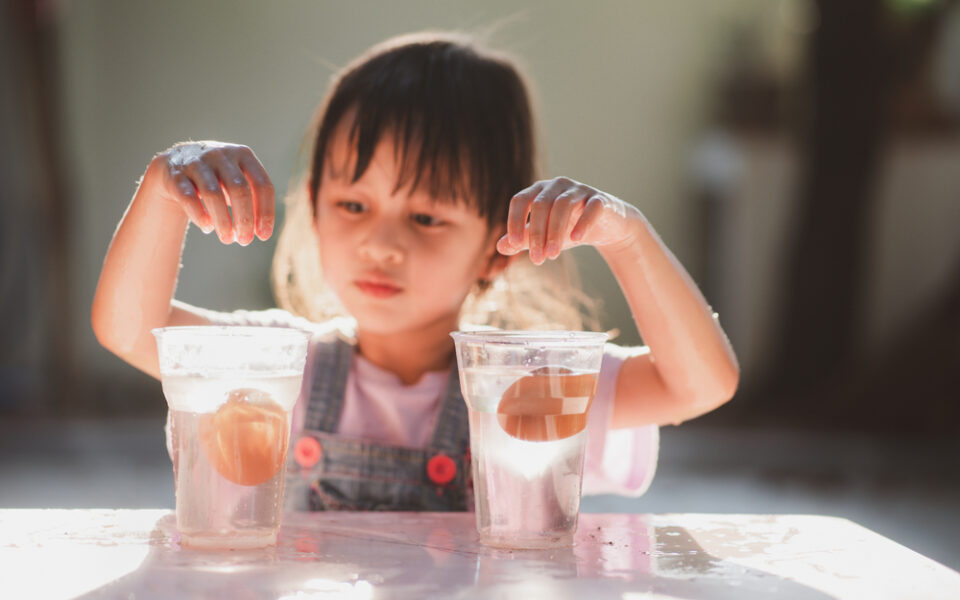
Floating Eggs in Water
This water science experiment is an excellent way to demonstrate the concept of density to children of all ages, especially preschoolers and early elementary students.
Density measures an object’s mass per unit of volume. One easy way to illustrate density is to think about people in a room. A room with 50 people will be more tightly packed (and therefore denser) than a room of the same size with only five people.
Water has a density of 1 gram per milliliter. Any object with a greater density than this will sink when suspended in water. In this experiment, your children will use an uncooked egg (which has an average density of 1.03 grams per milliliter) to see how density affects buoyancy. Your children will also use salt to see how dissolved particles affect water’s density. You can also see this in other science experiments with water, such as this sugar water density experiment.

Materials
- 2 uncooked eggs
- 2 tall drinking glasses (transparent)
- 3 tablespoons salt
- Water
Directions
- Kids fill a glass about ¾ full of water (adults, assist younger kids if necessary). Carefully place an uncooked egg into the glass. It should sink to the bottom.
- Fill the other glass ¾ full of water, add the salt, and stir until fully dissolved.
- Have your children place the second egg into the saltwater. It will float! This is because saltwater, unlike pure water, is denser than the egg.
Walking Rainbow Water Experiment
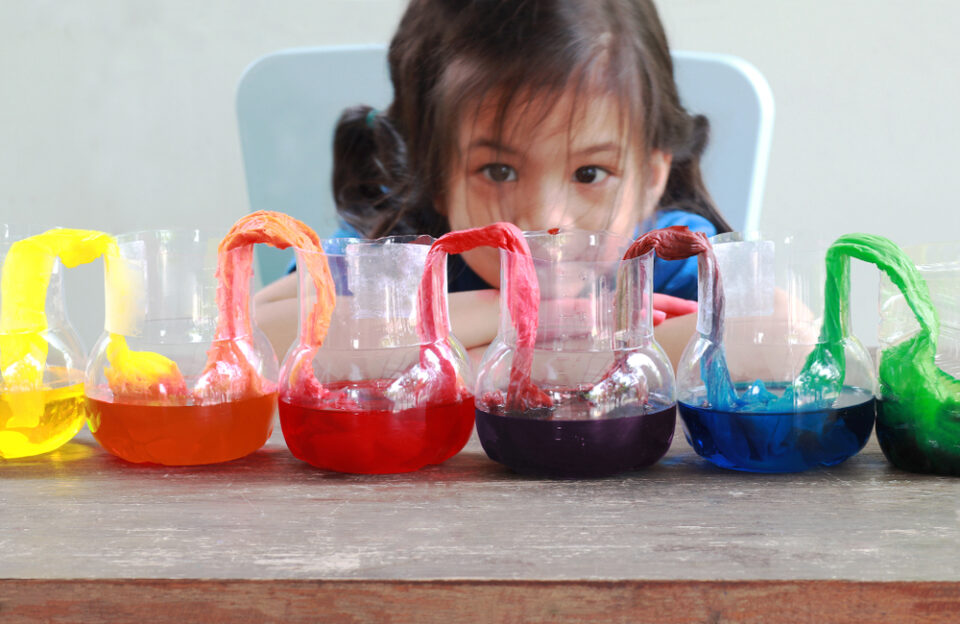
This is a great, simple science experiment for kids of all ages who love a little color. Your children will see two properties of water demonstrated with this experiment: adhesion and cohesion.
When your children place paper towels into water glasses for this experiment, they will witness adhesion (the water molecules clinging to the paper towel). They will also observe cohesion, which causes the water molecules to cling to one another, defying gravity and traveling up the paper towel.
Adhesion and cohesion are the primary cause of capillary action, the science that allows water to flow upward into a plant’s roots. The colored liquid makes the capillary action easier to see, so your children can better understand this fascinating phenomenon.
Materials
- 6 wide-mouthed glasses (or jars)
- Paper towels
- Food coloring or liquid watercolors (red, yellow, and blue)
Directions
- Kids line up the glasses in a row and add a few drops of food coloring to every other glass (red in the first, yellow in the third, and blue in the fifth). Leave the other glasses empty.
- An adult helps pour water into the glasses with food coloring until they are nearly full.
- Kids tear 5 sheets of paper towel and fold them lengthwise into thirds.
- An adult helps kids place the end of one paper towel into the glass of water with the red food coloring and the other end into the empty glass next to it, forming an arc between the two glasses. Repeat with each paper towel sheet until the gap between each glass is bridged by a sheet. When complete, each glass should have at least one paper towel inside (see picture above).
- Watch the paper towels absorb the colors! After several minutes, the colored water will have traveled along each paper towel, mixing in the empty glasses and creating a “walking rainbow.”
Enjoy Our Science-Themed Subscription Boxes at Home
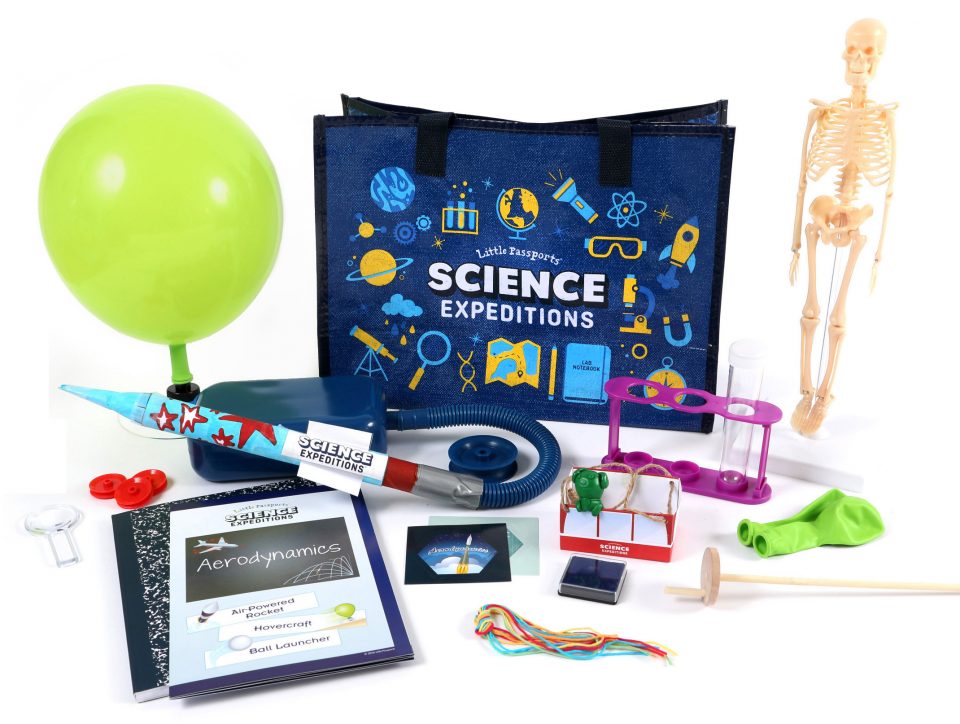
Do your young scientists want to study water even further? There are plenty of at-home science activities the whole family can try together.

Show them how salt affects water’s freezing temperature with the ice cube on a string experiment, or demonstrate the power of water by building a DIY hydro-powered water wheel. These activities can spark children’s curiosity and help them cultivate a lifelong love of science and learning.
And your child’s scientific journey doesn’t have to end there! Little Passports offers award-winning science lessons and experiments delivered to your door monthly in our subscription boxes:
Science Junior: A monthly box filled with activities, games, and stories for kids ages five to eight. Your children will learn about scientific topics like volcanoes, optical illusions, and pollination that will help them better understand our fascinating world.
Science Expeditions: Designed for kids ages eight and up, this monthly subscription box contains everything your children need for an array of STEM activities. These cool science kits include lessons on engineering, biology, hydrology, and more.
These boxes provide fun, engaging activities that facilitate hands-on learning—and loads of fun!
